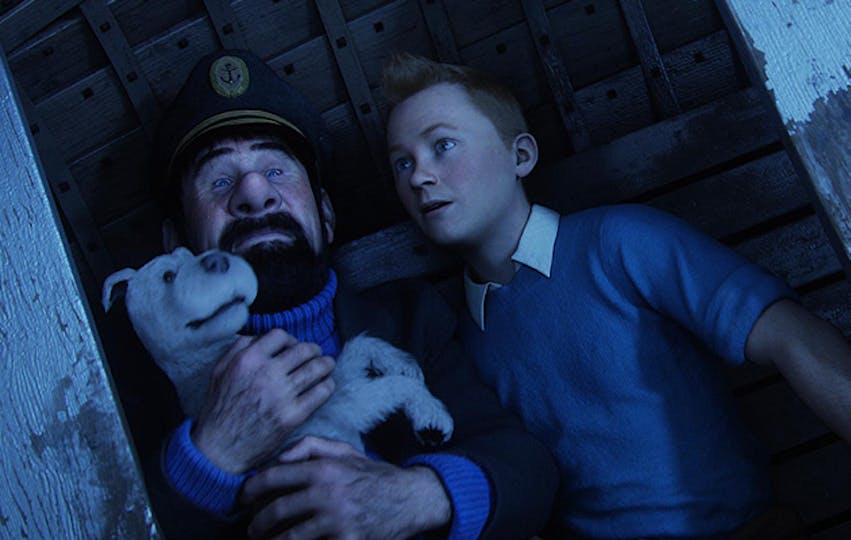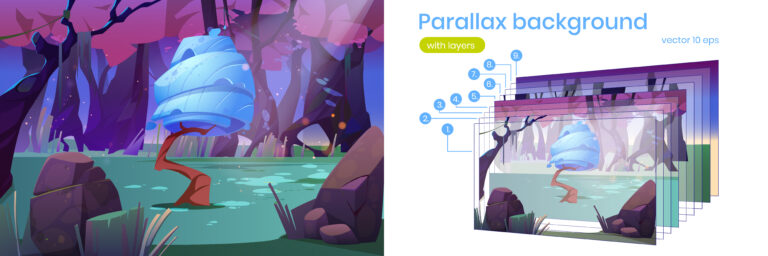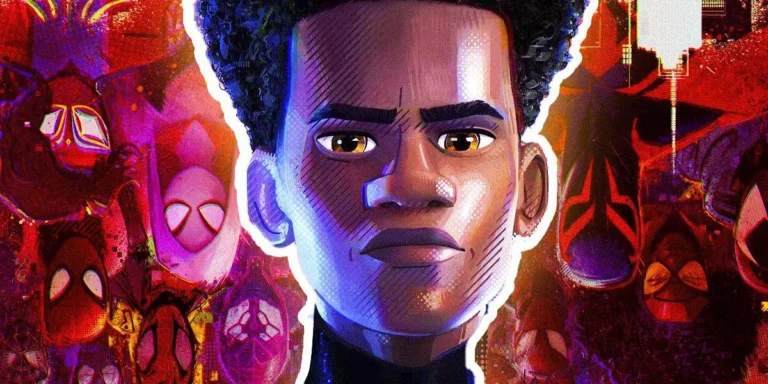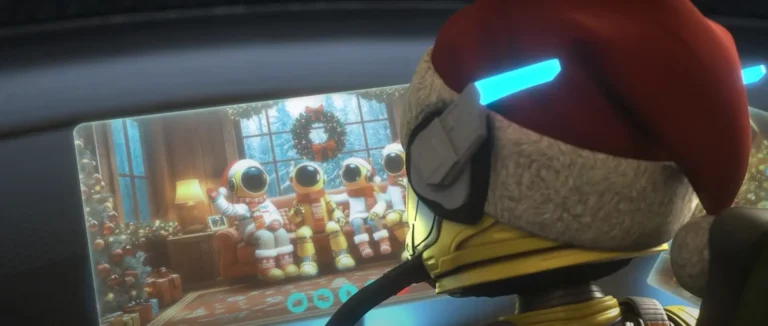Storytelling in animation is the process of conveying a narrative through animated visuals, characters, and sequences. It involves creating a cohesive plot, developing relatable characters, and using visual and auditory elements to engage the audience and evoke emotions. We live in a magical era for animated storytelling. Film festivals flourish worldwide to celebrate new animation; animated content is being produced and streamed on new platforms for both kids and adults, and advertisers are hungrily seeking fresh talent to connect with audiences in a meaningful way.
Skilled storytellers specializing in animation are in high demand, and the opportunities to thrive in the field are ever-expanding. Yet, it has been difficult to find a resource aimed at providing the skills necessary to become a successful animated storyteller.
In this article, we will unwrap the technical and psychological intricacies of storytelling in animation, unraveling the origins, dissecting narrative elements, and deciphering the profound impact of animation on our perceptions and emotions.

Need Animation Services?
Visit our Animation Service page to see how we can help bring your ideas to life!
I- Origins of Storytelling in Animation
I-I- Historical Perspective on Storytelling
The roots of storytelling run deep, tracing back to ancient oral traditions where tales were passed down through generations. These narratives evolved with the advent of written language, finding expression in various art styles. Animation, with its ability to blend visual and narrative elements seamlessly, has become a modern-day torchbearer of this rich tradition.
I-II- Evolution from Oral Traditions to Written Narratives
As societies progressed, so did storytelling methods. From the spoken word to written manuscripts, stories transformed and adapted, finding new ways to resonate with audiences. Animation stands as a testament to this evolution, breathing life into narratives through the marriage of visuals and storytelling.
I-III- Emergence of Storytelling in Visual Arts
The fusion of storytelling with visual arts marked a pivotal moment in the narrative landscape. Paintings, illustrations, and eventually animated sequences became vehicles for storytelling. This intersection paved the way for the dynamic and immersive storytelling we witness in contemporary animation.

II- Narrative Elements in Animation
II-I- Introduction to Key Narrative Elements
In the realm of animation, narrative elements are the building blocks that give structure, meaning, and resonance to the stories being told. These elements, borrowed from the broader tradition of storytelling, take on unique dimensions when translated into the visual medium of animation. Here are the fundamental narrative elements that play a crucial role in shaping animated stories:
Plot: In animation, the plot serves as the backbone of the narrative. It encompasses the sequence of events that drive the story forward. Whether it’s a quest for a magical artifact or a character’s personal journey of self-discovery, the plot provides the framework for the animation’s unfolding narrative.
Characterization: Animated characters are more than just drawings; they are vessels for emotions, personalities, and relatable experiences. Effective characterization involves giving life to these characters, endowing them with unique traits, motivations, and arcs. Through animation, characters express emotions not just through dialogue but also through movement and visual cues.
Setting: The setting in animation is not merely a backdrop; it’s a dynamic and integral part of the storytelling process. Animated worlds can defy the laws of physics, introducing fantastical landscapes, futuristic cities, or dreamlike realms. The setting in animation contributes to the atmosphere and emotional tone of the story.
Conflict: Conflict is the driving force that propels animated narratives forward. It can take the form of external challenges, internal struggles, or the clash of opposing forces. Animated conflict is visually dynamic, often manifesting in action sequences, confrontations, and visual metaphors that vividly portray the obstacles characters must overcome.
Resolution: The resolution brings closure to the animated story. It is the moment when conflicts are resolved, characters undergo growth, and themes find fulfillment. In animation, the resolution is not only about tying up loose ends but also about leaving a lasting impression on the audience, creating a sense of catharsis or wonder.
II-II- How Animation Uniquely Utilizes Narrative Elements
Animation, as a visual storytelling medium, offers unique advantages and challenges in the utilization of narrative elements. Unlike traditional storytelling, an animation company has the power to transcend the constraints of reality and opening up a realm of creative possibilitiesanimated narratives. Here’s how animation brings a distinctive touch to each narrative element:
Plot: Animation allows for the exploration of intricate and imaginative plots. From complex time-travel narratives to whimsical tales of anthropomorphic characters, animation provides the canvas for storytellers to push the boundaries of conventional storytelling.
Characterization: Animated characters can express emotions through exaggerated movements, facial expressions, and even changes in form. The visual nature of animation enables the creation of characters that might be physically impossible in the real world, adding an extra layer of creativity to characterization.
Setting: Animated settings are limited only by the animator’s imagination. Whether it’s a surreal dreamscape or a futuristic cityscape, animation allows for the creation of visually stunning and fantastical environments that enhance the storytelling experience.
Conflict: Animated conflict unfolds dynamically, with action sequences, fantastical battles, and visually striking confrontations. The animated medium enables storytellers to visualize conflict in ways that go beyond the constraints of live-action filmmaking.
Resolution: The resolution in animation is an opportunity for visual spectacle and emotional resonance. Whether it’s a heartwarming conclusion or a visually stunning climax, animation has the flexibility to craft resolutions that leave a lasting impact on the audience.

III- Visual Storytelling
Visual storytelling in animation goes beyond mere aesthetics; it is a language in itself. The power of a well-crafted visual narrative lies in its ability to evoke emotions, convey information, and immerse the audience in the animator’s world. It is a symbiotic relationship between what is seen and what is felt, creating a multi-sensory storytelling experience.
The animator’s toolkit includes a myriad of techniques to communicate narratives visually. From the careful composition of scenes to the subtle nuances of color theory, each choice contributes to the overall impact. Visual metaphors, a hallmark of animation, add layers of meaning, inviting audiences to interpret stories on a deeper level.
IV- Animation Principles
Overview of Fundamental Animation Principles: Successful animation relies on a set of foundational principles that bring life to characters and scenes. Squash and stretch, timing and spacing, anticipation, follow-through, and exaggeration are the building blocks that define the fluidity and expressiveness of animated storytelling.
Contribution to Storytelling: These animation principles aren’t mere technicalities; they are narrative tools. Squash and stretch enhance character expressions, timing dictates the rhythm of the story, and exaggeration allows for the amplification of emotions. Understanding the synergy between these principles and storytelling is key to crafting animations that resonate with the audience.
V- Storyboarding
Definition and Purpose of Storyboarding: Storyboards serve as the blueprint of an animated narrative. These visual guides outline the sequence of scenes, framing the story beat by beat. In the pre-visualization stage, storyboarding aids in conceptualizing the narrative flow and serves as a crucial tool for collaboration among the animation team.
Role in Pre-visualization and Planning: The act of storyboarding is not just a technical step but a psychological one. It requires the animator to visualize the story from the audience’s perspective, anticipating emotional beats and ensuring a coherent narrative flow. A well-crafted storyboard not only streamlines the animation process but also enhances the psychological impact on the viewer.
Psychological Impact of Well-Crafted Storyboards: The effectiveness of a storyboard lies in its ability to evoke anticipation, surprise, and emotional connection. As a visual script, it acts as a psychological roadmap, guiding the audience through the intended emotional journey. Each frame becomes a stepping stone, heightening the viewer’s engagement and immersion in the unfolding narrative.

VI- Animation Process
Step-by-Step Breakdown: The animation process is a carefully orchestrated sequence of steps, each playing a pivotal role in bringing a story to life. Conceptualization sparks the initial idea, scripting crafts the narrative structure, storyboarding visualizes the sequence, animation breathes movement into characters, and editing/post-production refines the final product. Understanding how each step contributes to the narrative allows animators to weave a cohesive and impactful story.
Contribution to Narrative: Conceptualization sets the tone and theme, scripting establishes the plot, storyboarding visualizes the narrative flow, animation infuses characters with life, and editing ensures a seamless and emotionally resonant story. The synergy of these steps transforms a concept into a compelling animated tale, where technical expertise converges with storytelling finesse.
VII- Genres in Animation
Exploration of Various Animation Genres: Animation spans a diverse spectrum of genres, from the whimsical realms of comedy to the thought-provoking landscapes of science fiction. Each genre presents unique storytelling challenges and opportunities. Comedy relies on timing and visual gags, drama on emotional depth, fantasy on imaginative world-building, sci-fi on futuristic concepts, and adventure on dynamic storytelling.
Unique Storytelling Challenges and Opportunities: Genres not only define the thematic landscape but also dictate storytelling approaches. Comedy demands precise timing for punchlines, drama necessitates nuanced character development, fantasy invites expansive visual creativity, sci-fi explores speculative concepts, and adventure thrives on dynamic narratives. Understanding genre-specific storytelling nuances allows animators to tailor their approach for maximum impact.
VIII- Psychological Impact of Animation Storytelling
Emotional Resonance and Connection: At the core of animation’s psychological impact is its ability to evoke genuine emotions. Whether it’s laughter, tears, or excitement, animation has the power to forge a deep emotional connection with the audience. Characters and narratives become vessels for empathy, allowing viewers to immerse themselves in the story on a visceral level.
Cognitive and Psychological Effects: Beyond emotions, animation storytelling can influence cognitive processes. Visual narratives stimulate the mind, encouraging active engagement and imaginative exploration. The interplay of visuals and storytelling can enhance cognitive understanding, making complex concepts accessible and memorable.
Influence on Perception and Understanding: The visual nature of animation allows for the effective conveyance of abstract ideas and complex narratives. Through visual metaphors and symbolic storytelling, animation has the capacity to shape perceptions and broaden understanding. This influence extends beyond entertainment, impacting how audiences perceive and interpret the world around them.
Conclusion
In summary, animated storytelling emerges as a dynamic fusion of technical prowess and psychological depth. From ancient oral traditions to the contemporary blend of visuals and narratives, animation has evolved into a captivating art form. Each section, from the foundational narrative elements to the unique utilization of animation principles, contributes to a rich storytelling tapestry.
As we appreciate the intricate craftsmanship and psychological impact of animation, we acknowledge the profound role it plays in shaping our emotions, thoughts, and perceptions. In this magical era of animated storytelling, where opportunities abound, understanding the synergy of technical and psychological aspects enriches our experience of this ever-evolving art form.












